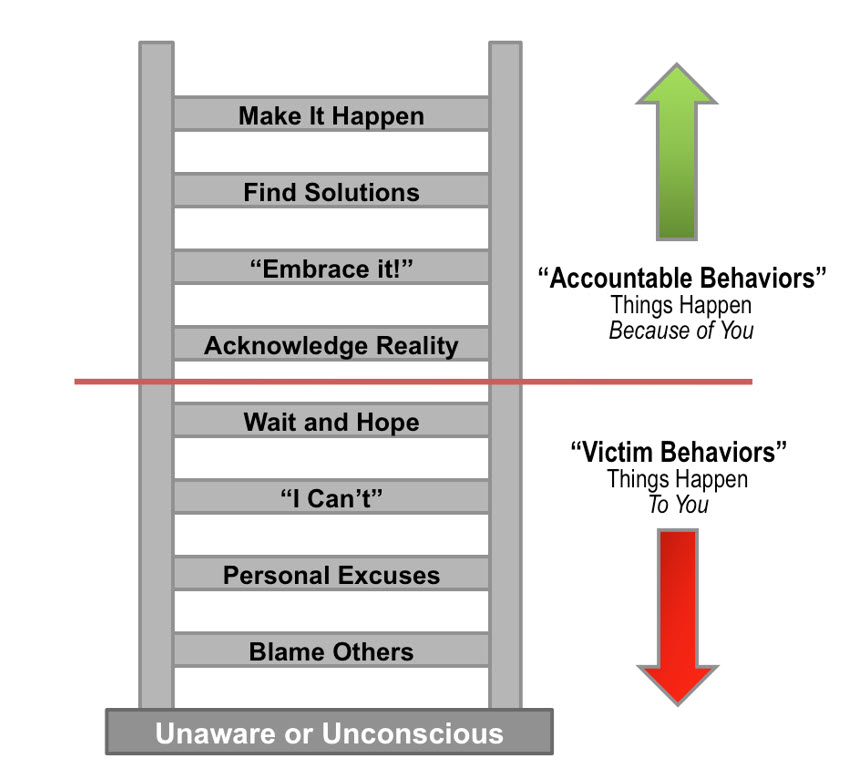Accountability within organizations is essential to performance and long-term business success yet many leadership teams acknowledge that there is room for improvement. 84% of the workforce describes itself as “trying but failing” or “avoiding” accountability, and 80% of people see accountability as punishing, research shows.
Signs that a team may have an accountability gap include missed deadlines, broken promises, or vague expectations. Gossip, favoritism, a lack of trust, and micromanagement are other symptoms of low accountability.
Building accountability in the workplace isn’t easy. For most teams, establishing a shared definition of accountability is the first step. What exactly does it mean to be accountable at work and to your team members?
Webster’s Dictionary says the definition of accountability is: “the obligation or willingness to accept responsibility for one’s actions.”
Accountability fosters better work relationships, improves job satisfaction, and boosts collaboration. It inspires individuals to improve their performance and has been linked to higher engagement.
Despite the many proven benefits of accountability, many leaders and teams still struggle to build and maintain accountability. 25% of managers say an absence of accountability is one of the biggest hurdles for their team. It has been linked to negative consequences such as poor performance, increased turnover, and decreased output.
Accountability isn’t just something to think about during annual performance reviews or when something goes wrong. It must be practiced on a daily basis. Team members will notice when their leaders are walking the walk and it will inspire them to do the same.
What follows is a step-by-step process to help leaders clarify accountability and integrity within themselves, their teams, and their organizations. Each of the following five principles – Commitment, Choice, Consequences, Congruence, and Consciousness – are at the center of operating with integrity and accountable behaviors.
Step 1: What was the Broken Agreement or Commitment?
A commitment is formal or implied, written or spoken agreement or pledge to do something.
Step 2: What was the impact(s) on others? On self? On the company?
The consequences of our actions could be either intended or unintended.
Step 3: What are the real message(s) behind the behavior I am sending out?
Step 4: Are you willing to change this behavior?
As a leader, perhaps look at how this behavior is influencing your impact on your team and the organization.
The Accountability Ladder
The accountability ladder represents a spectrum of behaviors ranging from the least accountable (level 1) to the most accountable (level 8).

In general, levels 1 to 4 represent behaviors associated with low accountability, while levels 5 to 8 represent behaviors associated with high accountability.
Levels one to four are below the line and describe victim positions/behaviors. People adopting a victim position feel that they have no (or little) control. You’ll hear them say things like:
- “It’s not my job.”
- “That’s the way we have always done it.”
- “No one told me what to do.”
- “I didn’t know you needed it right away.”
The top four levels are above-the-line positions and represent proactive and empowered positions. People adopting this position feel able to take action and control.
Here are just a few ways accountability leads to better outcomes:
Builds trust
When leaders practice clear accountability, people can trust that they are acting in the best interests of the workforce and the organization as a whole. By embodying the company’s values, and interacting with others ethically and honorably, leaders set tangible examples of good behavior. In turn, team members can see when leaders are headed off track and hold them accountable.
Strengthens relationships and engagement
When team members feel like they can have an open, two-way dialogue with leadership, they’re more likely to be engaged, whether this takes the form of sharing feedback or asking questions. This can lead to better results. According to Gallup, companies with engaged employees outperform their competitors and have higher profitability.
Improves transparency
When leaders admit to the mistakes they have made, they can more quickly find ways to solve the problem and move forward. On the other hand, leaders who are in denial about a problem won’t be able to fix it or recover as quickly. Additionally, since accountable leaders aren’t afraid of admitting to their missteps, they can seek out solutions from the rest of the organization. This can promote greater innovation, creativity, and information-sharing.
Creating a healthy culture of accountability isn’t easy or quick, but over time it yields positive dividends. The best leaders are those who seek to develop their own accountability and demonstrate to team members that improvement is possible.
To learn more about The Propel Consulting Group, contact us now.

Leave A Comment